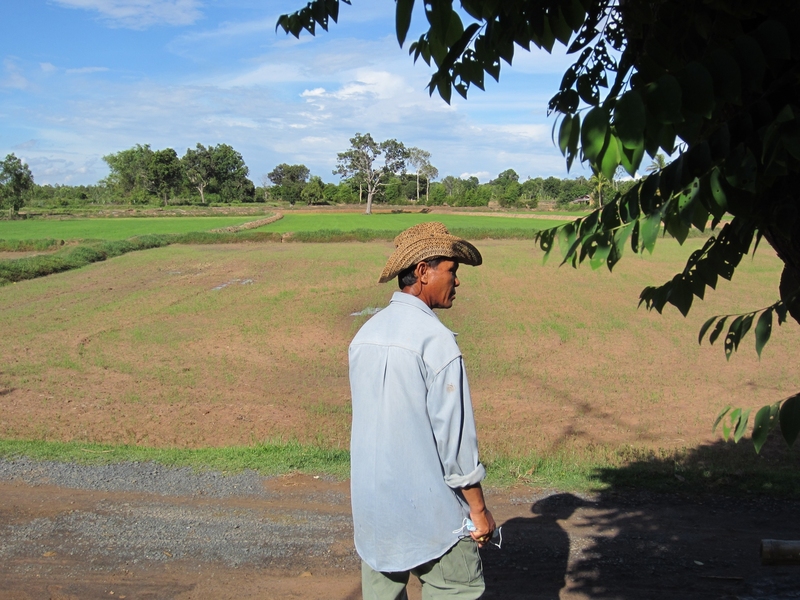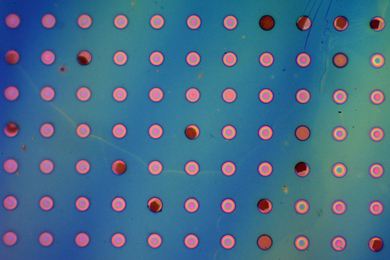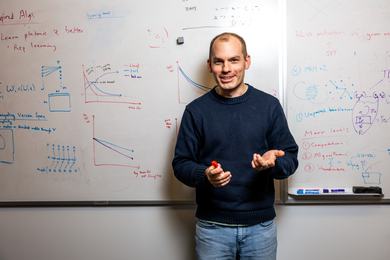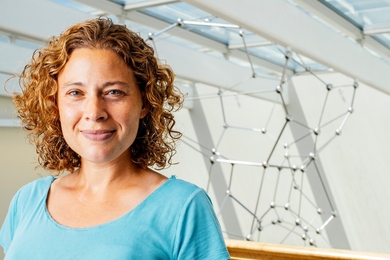Microfinance seems like a boost for entrepreneurs in developing countries: Give them little loans, and people can make their small businesses a bit larger. Starting in 2001, the government of Thailand used this idea as the basis of a program called the Thai Million Baht Village Fund, which distributed loans in 77,000 rural villages.
The program was simple, providing a million baht (the Thai currency), or about $24,000, to create banks in each of those villages. But the outcome of the program was complex, as MIT economist Robert Townsend outlines in a newly published paper. In areas where loans were disbursed, consumption grew, income for those in agriculture and other forms of business grew, and wages grew for laborers — all signs of economic growth — but overall asset growth in the villages decreased.
“The flow of funds from savings to investment does not work very well when left to its own” in Thai villages such as these, says Townsend, the Elizabeth and James Killian (1926) Professor of Economics. “These kinds of interventions seem to have pushed the system in the right direction.”
And yet, he is quick to note, the program was hardly an unambiguous success; its effects varied significantly, among and within villages. Like microfinance generally, Townsend suggests, the Million Baht fund yielded encouraging signs while raising other questions for further study.
“Two or three years ago microfinance was thought to be the big cure for many diseases, while detractors have always wondered about sustainability,” Townsend says, adding that there are still comparatively few rigorous studies of the subject.
A long-term help, or just short-term spending money?
The matter of sustainability is one of the key problems raised by Townsend’s study of the Million Baht fund: People who received loans changed their spending and investment habits, but not always in ways that produce long-term growth.
“Many variables moved rather dramatically,” Townsend says. Consumption, for instance, doubled on average in the short run. “The order of magnitude of that increase was quite surprising,” he says. But six or seven years after the program was implemented, consumption had dropped back down significantly. So what happened?
“Our interpretation is that when they introduced these village funds, households … needed less in their rainy-day funds, and they converted part of that savings into consumption. Others likely lacked liquidity at the time the program was introduced and borrowed to increase consumption. Still others likely reduced consumption in order to invest, although there are not enough data to nail that down definitively.”
The overall effect helped produce some economic growth, specifically with improved capital and hired labor. A typical entrepreneur using the program, Townsend suggests, was a trader with a pickup truck, buying goods from farmers and taking them to area markets. “Gasoline purchases went up, auto repairs went up, so it looks like traders were improving and expanding their business,” Townsend notes.
Those small-business owners also hired additional workers to help them, which may have been the most unambiguously beneficial effect of the program. “In villages where there is a substantial expansion of credit per capita, the wage rate goes up,” Townsend says. “Clearly there was some transformation in these businesses — taking on more labor, putting upward pressure on wages — so wage-earners benefitted.” The research found a wage increase of about 7 percent for the average household, and 12,500 baht in increased wage income for every 10,000 baht of credit from the fund.
Townsend and his co-author, Joseph Kaboski of the University of Notre Dame, suggest this change can lead to long-term rises in village wages, putting more money in the pockets of those who do not run businesses, but make a living strictly through labor. “There are spillovers, benefits for people who didn’t directly get credit,” Townsend says.
For all of that, however, overall assets did not grow as a result of the program, suggesting that its impact was limited. Financial savings dropped. Moreover, the Million Baht fund did not create many new, more productive businesses in Thai villages.
“I thought we would see substantial changes in the occupations as a result of this village-fund experiment,” Townsend says. “We don’t see too much of that. It was more businesses improving than new businesses expanding.”
Global implications?
The paper, “The Impact of Credit on Village Economies,” was published in the latest issue of the American Economic Journal: Applied Economics. Townsend has been overseeing fieldwork on the finances of Thai villagers continuously since 1997.
The results in this paper are based on household finance surveys Townsend and his colleagues took from 1997 through 2007; because the Million Baht Village Fund was disbursed quickly, in 2001 and 2002, the researchers believe they were able to discern a clear before-and-after picture, revealing the fund’s effects, and were able to track long-term financial changes in the villages.
The paper is “an important contribution to the issue of access to credit in emerging economies,” says Flavio Cunha, an assistant professor of economics at the University of Pennsylvania who has read the study. He notes that the wage increase suggests improved productivity, resulting from the expansion of credit in villages, which he terms an “important implication for policymakers.” The behavior of the villagers in the study, Cunha adds, can help researchers determine “what type of economic models we should zero in on when it comes to studying investments and consumption in developing economies.”
Townsend acknowledges that — as with most studies focused on one country — it is an open question how much light the results shed on the issue more broadly.
“We don’t know if this Thai experience generalizes to other countries or not,” he says. Still, he points out, “some aspects of what we’re finding are similar” to the results of a microfinance experiment that economists in MIT’s Abdul Latif Jameel Poverty Action Lab (J-PAL) conducted in Hyderabad, India, a few years ago.
From a policy standpoint, Townsend thinks new finance interventions are still worth pursuing — while applying lessons learned from the Million Baht fund experience.
“We see some evidence that some of the people who did get the credit made good use of it,” he notes.
Funding for the research was provided in part by the Bill and Melinda Gates Foundation, the John Templeton Foundation, the National Institute of Child Health & Human Development and the National Science Foundation.
The program was simple, providing a million baht (the Thai currency), or about $24,000, to create banks in each of those villages. But the outcome of the program was complex, as MIT economist Robert Townsend outlines in a newly published paper. In areas where loans were disbursed, consumption grew, income for those in agriculture and other forms of business grew, and wages grew for laborers — all signs of economic growth — but overall asset growth in the villages decreased.
“The flow of funds from savings to investment does not work very well when left to its own” in Thai villages such as these, says Townsend, the Elizabeth and James Killian (1926) Professor of Economics. “These kinds of interventions seem to have pushed the system in the right direction.”
And yet, he is quick to note, the program was hardly an unambiguous success; its effects varied significantly, among and within villages. Like microfinance generally, Townsend suggests, the Million Baht fund yielded encouraging signs while raising other questions for further study.
“Two or three years ago microfinance was thought to be the big cure for many diseases, while detractors have always wondered about sustainability,” Townsend says, adding that there are still comparatively few rigorous studies of the subject.
A long-term help, or just short-term spending money?
The matter of sustainability is one of the key problems raised by Townsend’s study of the Million Baht fund: People who received loans changed their spending and investment habits, but not always in ways that produce long-term growth.
“Many variables moved rather dramatically,” Townsend says. Consumption, for instance, doubled on average in the short run. “The order of magnitude of that increase was quite surprising,” he says. But six or seven years after the program was implemented, consumption had dropped back down significantly. So what happened?
“Our interpretation is that when they introduced these village funds, households … needed less in their rainy-day funds, and they converted part of that savings into consumption. Others likely lacked liquidity at the time the program was introduced and borrowed to increase consumption. Still others likely reduced consumption in order to invest, although there are not enough data to nail that down definitively.”
The overall effect helped produce some economic growth, specifically with improved capital and hired labor. A typical entrepreneur using the program, Townsend suggests, was a trader with a pickup truck, buying goods from farmers and taking them to area markets. “Gasoline purchases went up, auto repairs went up, so it looks like traders were improving and expanding their business,” Townsend notes.
Those small-business owners also hired additional workers to help them, which may have been the most unambiguously beneficial effect of the program. “In villages where there is a substantial expansion of credit per capita, the wage rate goes up,” Townsend says. “Clearly there was some transformation in these businesses — taking on more labor, putting upward pressure on wages — so wage-earners benefitted.” The research found a wage increase of about 7 percent for the average household, and 12,500 baht in increased wage income for every 10,000 baht of credit from the fund.
Townsend and his co-author, Joseph Kaboski of the University of Notre Dame, suggest this change can lead to long-term rises in village wages, putting more money in the pockets of those who do not run businesses, but make a living strictly through labor. “There are spillovers, benefits for people who didn’t directly get credit,” Townsend says.
For all of that, however, overall assets did not grow as a result of the program, suggesting that its impact was limited. Financial savings dropped. Moreover, the Million Baht fund did not create many new, more productive businesses in Thai villages.
“I thought we would see substantial changes in the occupations as a result of this village-fund experiment,” Townsend says. “We don’t see too much of that. It was more businesses improving than new businesses expanding.”
Global implications?
The paper, “The Impact of Credit on Village Economies,” was published in the latest issue of the American Economic Journal: Applied Economics. Townsend has been overseeing fieldwork on the finances of Thai villagers continuously since 1997.
The results in this paper are based on household finance surveys Townsend and his colleagues took from 1997 through 2007; because the Million Baht Village Fund was disbursed quickly, in 2001 and 2002, the researchers believe they were able to discern a clear before-and-after picture, revealing the fund’s effects, and were able to track long-term financial changes in the villages.
The paper is “an important contribution to the issue of access to credit in emerging economies,” says Flavio Cunha, an assistant professor of economics at the University of Pennsylvania who has read the study. He notes that the wage increase suggests improved productivity, resulting from the expansion of credit in villages, which he terms an “important implication for policymakers.” The behavior of the villagers in the study, Cunha adds, can help researchers determine “what type of economic models we should zero in on when it comes to studying investments and consumption in developing economies.”
Townsend acknowledges that — as with most studies focused on one country — it is an open question how much light the results shed on the issue more broadly.
“We don’t know if this Thai experience generalizes to other countries or not,” he says. Still, he points out, “some aspects of what we’re finding are similar” to the results of a microfinance experiment that economists in MIT’s Abdul Latif Jameel Poverty Action Lab (J-PAL) conducted in Hyderabad, India, a few years ago.
From a policy standpoint, Townsend thinks new finance interventions are still worth pursuing — while applying lessons learned from the Million Baht fund experience.
“We see some evidence that some of the people who did get the credit made good use of it,” he notes.
Funding for the research was provided in part by the Bill and Melinda Gates Foundation, the John Templeton Foundation, the National Institute of Child Health & Human Development and the National Science Foundation.






